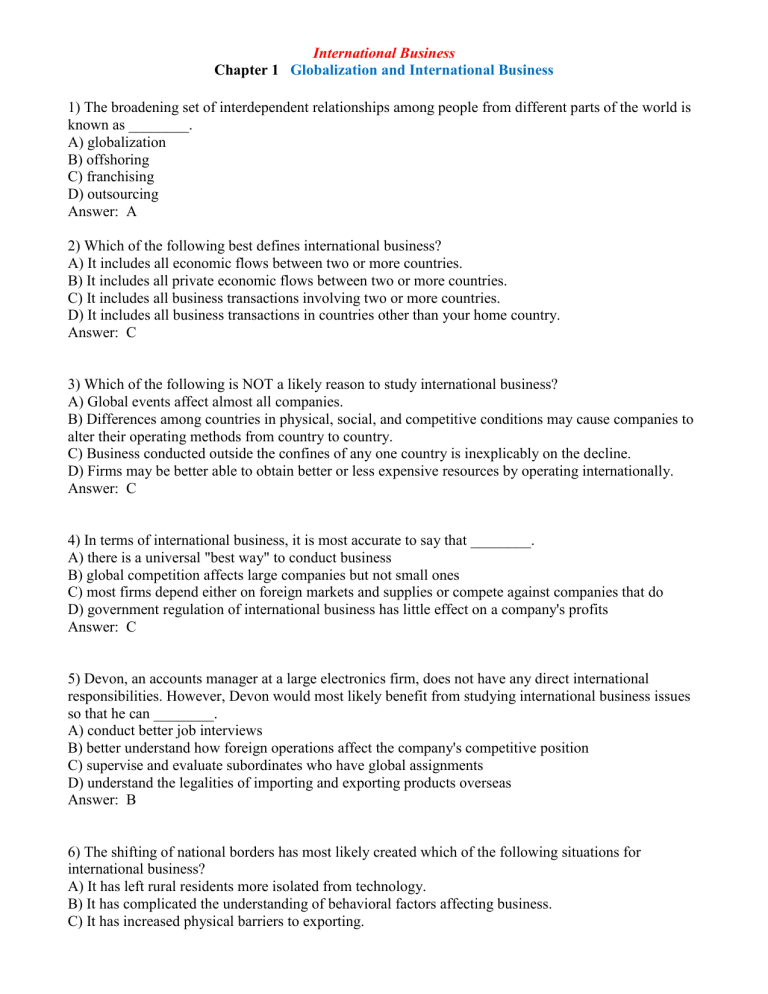
International Business Chapter 1 Globalization and International Business 1) The broadening set of interdependent relationships among people from different parts of the world is known as ________. A) globalization B) offshoring C) franchising D) outsourcing Answer: A 2) Which of the following best defines international business? A) It includes all economic flows between two or more countries. B) It includes all private economic flows between two or more countries. C) It includes all business transactions involving two or more countries. D) It includes all business transactions in countries other than your home country. Answer: C 3) Which of the following is NOT a likely reason to study international business? A) Global events affect almost all companies. B) Differences among countries in physical, social, and competitive conditions may cause companies to alter their operating methods from country to country. C) Business conducted outside the confines of any one country is inexplicably on the decline. D) Firms may be better able to obtain better or less expensive resources by operating internationally. Answer: C 4) In terms of international business, it is most accurate to say that ________. A) there is a universal "best way" to conduct business B) global competition affects large companies but not small ones C) most firms depend either on foreign markets and supplies or compete against companies that do D) government regulation of international business has little effect on a company's profits Answer: C 5) Devon, an accounts manager at a large electronics firm, does not have any direct international responsibilities. However, Devon would most likely benefit from studying international business issues so that he can ________. A) conduct better job interviews B) better understand how foreign operations affect the company's competitive position C) supervise and evaluate subordinates who have global assignments D) understand the legalities of importing and exporting products overseas Answer: B 6) The shifting of national borders has most likely created which of the following situations for international business? A) It has left rural residents more isolated from technology. B) It has complicated the understanding of behavioral factors affecting business. C) It has increased physical barriers to exporting. D) It has slowed communications between a company's headquarters and foreign operations. Answer: C 7) Which of the following is an indication of the increased globalization of business since the end of World War II? A) Foreign trade has largely replaced foreign ownership as a means of conducting international business. B) World trade has grown more rapidly than world production. C) Globally, consumers now depend on foreign output for more than half their consumption. D) Countries have increased their import restrictions to counter the rising tide of imports. Answer: B 8) Most of the world's goods and services are sold ________. A) in international markets B) in the countries where they are produced C) through exports to small countries D) through exports to large countries Answer: B 9) According to the A.T. Kearny/Foreign Policy Globalization Index, countries ________. A) tend to be ranked similarly on all four dimensions B) are more globalized on the political dimension than on personal contact C) that are large in land mass and population are less globalized than small countries D) sometimes rank high on one dimension and low on another Answer: D 10) Which of the following has NOT been a major force increasing globalization in recent decades? A) liberalization of cross-border trade B) increase in and expansion of technology C) growing pressure from consumers D) decreasing prices of natural resources. Answer: D 11) Institutional development of services by business and government has aided the expansion of international business by ________. A) providing a universally agreed upon language for conducting international transactions B) removing immigration restrictions so that global firms can move personnel easily C) developing means to ease the flow of goods among countries D) spurring competition among domestic producers Answer: C 12) Which of the following has MOST influenced consumers to demand access to foreign-made products? A) Declining global affluence has caused consumers to seek out lower-priced products from abroad. B) Consumers have become more efficient in using media and technologies to compare prices worldwide. C) Fearing that their governments will enact restrictive policies on imports, consumers are stocking up on foreign products before restrictions are put in place. D) Expectations of rising prices of foreign products have caused consumers to seek foreign products before their prices become prohibitive. Answer: B 13) Which of the following best explains why international business has grown rapidly in the past few decades? A) the end of the political schism between the Communist and non-Communist blocs B) greater income equality in most countries C) growing concern about climate change D) increased concerns about terrorism Answer: A 14) Advanced communication systems have contributed to growth in international business by ________. A) enabling better oversight of global operations B) reducing the effects of global competition C) decreasing the cost of cargo transportation D) reducing export regulations Answer: A 15) Imported flowers are now a stronger competitor to U.S. grown flowers in the U.S. market. Which of the following is likely the MOST important factor for this increase in imports? A) more effective production techniques B) advances in communication systems C) advances in transportation D) cross-national cooperation Answer: C 16) Because consumers want a greater variety of goods and services at lower prices, many governments have ________. A) reduced their restrictions on the international movement of goods and services B) acted to tax most imports at a lower rate than domestic products C) sought to eliminate reciprocal advantages negotiated through international organizations and treaties D) increased their participation in multinational problem-solving efforts Answer: A 17) Which of the following best explains recent governmental relaxation of restrictions on cross-border trade or resource movements? A) Most countries face shortages of workers, so they seek immigrants who can help them produce more. B) Governments believe that this will decrease the need to make their own companies more innovative. C) Consumers increasingly want to buy goods and services produced in their own countries, making restrictions less necessary. D) Governments believe that domestic producers will become more efficient as a result of foreign competition. Answer: D 18) A company starting out with a global focus, usually because of the international experience of its founders, is called a ________. A) multinational enterprise B) transnational company C) strategically allied company D) born-global company Answer: D 19) In a strategy known as ________, many new companies locate themselves near competitors and suppliers. A) offshoring B) franchising C) clustering D) exporting Answer: C 20) Assume an enterprise is considering establishment of a foreign production facility. Which of the following best supports this decision? A) Its foreign competitors have higher production costs than it has. B) Its main competitor successfully opened a foreign plant. C) Its suppliers follow an agglomeration strategy. D) None of its competitors have foreign production facilities. Answer: B 21) When a company successfully responds to foreign production and market opportunities, ________. A) other companies will likely emulate its successful practices B) it likely has a long-term advantage over competitors C) it will downsize its domestic operations D) its home government likely raises taxes on the company Answer: A 22) Which of the following is NOT one of the three main reasons affecting international business for governments to cooperate with each other? A) to attack problems jointly that one country acting alone cannot solve B) to deal with issues that lie outside the territory of any nation C) to gain reciprocal advantages D) to establish a common language Answer: D 23) Governments have signed treaties to protect foreign-owned property rights, such as investments and patents. A primary reason for doing so is to ________. A) gain reciprocal advantages B) reduce the domestic effects of other countries' economic policies C) deal with areas of concern outside the territory of any one country D) reduce national conflicts leading to violent political demonstrations Answer: A 24) All of the following are areas in which commercial activities take place outside the territory of any nation EXCEPT ________. A) noncoastal areas of the oceans B) the Panama and Suez Canals C) outer space D) Antarctica Answer: B 25) What is the most likely reason that governments cooperate with each other through treaties, agreements, and consultations? A) to gain an advantageous division of labor B) to be in compliance with United Nations' requirements C) to attack problems jointly that one country acting alone cannot solve D) to assure that all countries get an equitable share of taxes from multinational enterprises Answer: C 26) Which of the following is the LEAST likely reason that small countries worry about overdependence caused by globalization? A) A large country on whom they depend may pressure them on political matters. B) A large international firm may dictate its terms of operations in a small country. C) A large company may exploit legal loopholes to avoid tax payments. D) A large country may substantially increase its demand for the small country's production. Answer: D 27) Which of the following statements would most likely be made by a supporter of globalization? A) Globalization encourages the adoption of uniform and superior standards for combating environmental problems. B) Economic growth created by globalization is largely in services, which involves the use of few nonrenewable resources. C) Global competition discourages resource-saving technologies, which are costly. D) Air pollution and toxic runoff problems increase with global economic growth. Answer: A 28) Curtailment of logging in the Amazon region is generally viewed as environmentally beneficial for the planet as a whole. However, unemployed Brazilian workers have felt that job creation inside Brazil is more important than climate protection outside Brazil. This example best illustrates which of the following? A) why smaller countries are concerned that large international companies are powerful enough to dictate operating terms B) why globalization is needed to foster uniform standards for combating environmental problems C) how cultural homogeneity threatens the cultural foundation of smaller nations D) how global interests can conflict with a country's local interests Answer: D 29) Although globalization may bring economic growth, critics nevertheless contend that ________. A) the growth is too fast B) the inequality of gains puts some people in a relatively worse economic situation C) this growth is mainly for the future, thus ignoring present economic growth needs D) the cultural foundations of sovereignty are supported by globalization Answer: B 30) The process of shifting production from a domestic to a foreign location is best known as ________. A) offshoring B) outsourcing C) licensing D) joint venturing Answer: A 31) Which of the following statements would most likely NOT be supported by an advocate of offshoring? A) Offshoring increases the number of high-value jobs in the home countries of offshoring companies. B) Offshoring is fundamentally better for workers than the introduction of labor-saving technologies. C) Workers displaced due to offshoring are able to find new jobs as easily as those displaced by technology. D) There are upper limits to offshoring because of the lack of skilled workers willing to work permanently for low wages. Answer: B 32) A major criticism of offshoring is that it ________. A) increases production costs B) exchanges good jobs for bad jobs C) threatens the sovereignty of larger countries D) allows companies to avoid payment of any taxes Answer: B 33) Critics of offshoring claim all EXCEPT which of the following? A) Cost savings are seldom passed on to final consumers. B) Offshoring reduces the incomes of people in low-wage countries. C) Incomes of workers in countries whose companies offshored production have gone down as a percentage of national income. D) Many workers who have been displaced by offshoring do not have the skills needed for higher-value jobs. Answer: B 34) Assume that company executives at the firm would like to increase sales by expanding into an international market. Which of the following factors, if true, best supports a decision to expand sales globally? A) It can offshore most of its production. B) It can obtain all of its resources for the same price overseas. C) Its costs of making additional sales would not increase disproportionately. D) The foreign market has higher real interest rates. Answer: C 35) Kevin, marketing manager of the North American Bowling League, has decided to televise major bowling competitions to viewers in multiple countries rather than only in Canada and the U.S. Which of the following goals would this most likely help Kevin accomplish? A) acquiring new resources B) minimizing corporate risks C) increasing sales and profits D) obtaining competitive advantages Answer: C 36) A firm is currently seeking resources from foreign countries. Which of the following is the LEAST likely reason for doing so? A) manufacturing products at a lower cost B) gaining knowledge about a specific market C) following a customer into the global market D) differentiating its products from the competition Answer: C 37) Which of the following BEST explains how a firm reduces risk by operating internationally? A) taking advantage of business-cycle differences among countries B) buying competitive risk insurance unavailable domestically C) preventing competitors from operating in the countries it has entered D) operating in less competitive environments than those at home Answer: A 38) An example of a U.S. merchandise import is an automobile made in ________ and sold ________. A) the United States by a Japanese company; in the United States B) the United States by a Japanese company; outside the United States C) Japan by a Japanese company; in the United States D) Japan by a U.S. company; outside the United States Answer: C Learning Outcome: Summarize the main entry strategies and modes that businesses use to enter into foreign markets 39) Visible exports and imports are ________. A) merchandise imports and exports B) the sum total of goods and services traded C) international transactions paid for in money rather than barter D) typically a country's least common international economic transactions Answer: A 40) An example of a Japanese service export is a visit by a ________. A) Japanese citizen to Disneyland in the United States B) Japanese citizen to the Japan Pavilion at Epcot Center in the United States C) U.S. citizen to the Japan Pavilion at Epcot Center in the United States D) U.S. citizen to Tokyo Disneyland in Japan Answer: D 41) Reebok pays a royalty to the German Soccer League to use the team's logo on t-shirts that it sells. Reebok and the German Soccer League most likely have a ________. A) turnkey operation contract B) licensing agreement C) portfolio investment D) joint venture Answer: B 42) A foreign direct investment occurs when ________. A) a company owns at least 25% of a foreign firm B) a company has a controlling interest in a foreign company C) foreign ownership is in private rather than government securities D) a foreign firm agrees to a licensing agreement with a large conglomerate Answer: B 43) Which term refers to two or more companies that share ownership of an FDI? A) turnkey operation B) transnational firm C) joint venture D) franchise Answer: C 44) A multinational enterprise (MNE) is best defined as a firm ________. A) that is a member of the Fortune 500 B) with foreign business partners C) involved in global franchising D) with foreign direct investments Answer: D 45) The term used by the United Nations as a synonym for multinational enterprise is ________. A) multinational corporation B) transnational company C) international firm D) born-global Answer: B 46) Politics, law, culture, and economy are all examples of ________ factors that can affect the ways in which companies produce and sell their products in foreign markets. A) social B) physical C) competitive D) political Answer: A 47) Managers who are knowledgeable about ________ are better able to identify the location, quantity, quality, and availability of the world's natural resources. A) political factors B) geographic factors C) competitive factors D) cultural factors Answer: B 48) Although the U.S. film industry depends heavily on revenue in foreign countries, revenue from international markets is usually low for a sports-themed film. This is most likely due to ________ factors. A) political B) geographic C) behavioral D) legal Answer: C 49) In addition to understanding the laws affecting business in countries where their companies operate, it is most important for managers to understand the ________. A) methods for appointing local judges B) ethical rationale behind the laws C) history of the local legal system D) degree of law enforcement Answer: D Learning Outcome: Discuss the role of ethics and social responsibility in international business AACSB: Ethical understanding and reasoning abilities 50) Some key ________ factors in a company's international business external environment are its product strategy and access to resources. A) geographic B) political C) competitive D) behavioral Answer: C 51) The same automobile company produces Fiats and Ferraris. The company builds an engine plant in China with low production costs for Fiats but not Ferraris. The probable reason is that ________. A) Fiat competes mainly on a focus strategy, whereas Ferrari competes mainly on a mass-market strategy B) Fiat competes mainly on a mass-market strategy, whereas Ferrari competes mainly on a focus strategy C) Ferrari faces global competitors in China, whereas Fiat competes in China mainly against Chinese competitors D) although Ferrari did not build an engine plant, it will use the same Fiat engines in its models Answer: B 52) A computer firm has high foreign sales in Asia and wants to expand sales into Europe. Which of the following statements provides the most appropriate advice for Elway executives? A) Although countries' market sizes differ, companies usually face about the same number of competitors in each national market. B) In most industries, companies face the same competitors in each country where they operate. C) It takes about the same amount of resources to gain national distribution in one country versus another. D) Being a leader in one country does not guarantee market leadership in another country. Answer: D 53) When companies face the same competitors in almost all countries where they operate, ________. A) what they learn about each other in one country is useful in predicting the other's strategies and actions elsewhere B) the market leader is the same everywhere C) there is less need to understand the physical and societal factors of each country D) they are less likely to enter joint ventures with other companies Answer: A 54) The view that globalization is inevitable is most likely based on the belief that ________. A) international organizations will replace nation-states B) protesters against globalization will be persuaded to change their views C) people want more global homogeneity of cultures D) technical advances in transportation and communications are highly pervasive Answer: D 55) Critics of the view that regionalization will prevail over globalization most likely base their argument on the belief that ________. A) regionalization is a transition stage toward globalization B) neighboring countries are more apt to disagree politically than distant countries C) neighboring countries are too geographically similar to benefit from trade D) business in non-territorial areas is not regional Answer: A 56) Which of the following is NOT a common argument for the slowing of future globalization? A) Antiglobalization interests have been successful in electing parties that oppose freer movement of trade or people. B) Technological, transportation, and communication advances will decline in the near future. C) Major countries have either ignored certain international treaties or have refused to sign them. D) The growing split between those who succeed in a global environment and those who do not will foster greater antiglobalization sentiments. Answer: B 57) Some observers feel that international institutions and the people working in them cannot adequately handle the complexities of an interconnected world. Based on this, these observers believe that ________. A) globalization will slow in the future B) globalization is nevertheless inevitable C) international business will grow primarily on a regional basis D) private companies will replace international organizations in running the world's economy Answer: A 58) The owner of a U.S. football team and the owner of a Canadian hockey team purchase a British soccer team. This is an example of a ________. A) royalty B) portfolio investment C) turnkey operation D) joint venture Answer: D Learning Outcome: Summarize the main entry strategies and modes that businesses use to enter into foreign markets 59) Carnival Cruise Lines lowers its taxes by all of the following EXCEPT ________. A) hiring host-country nationals who pay no taxes B) taking advantage of taxation laws in foreign countries C) sailing in international waters outside countries' tax jurisdiction D) paying substantial port fees instead of taxes during stopovers Answer: A Learning Outcome: Summarize the main entry strategies and modes that businesses use to enter into foreign markets 60) A flag of convenience is ________. A) the declaration that a product is made in a country that has easier legal access to a given foreign market B) a designation for products originating within a particular trading group C) the registration of a shipping company in a country that charges low taxes D) the indication that a shipping organization can sail in international waters Answer: C 61) Globalization refers to all economic transactions among countries. Answer: FALSE 62) International business includes all commercial transactions between two or more countries. Answer: TRUE 63) Gaining some understanding of international business is important for any business student because global events and competition affect almost all companies. Answer: TRUE 64) The best way of conducting business domestically is also typically the best way to conduct business internationally. Answer: FALSE 65) It is difficult to compare globalization of business over time because shifting national borders have changed the nature of transactions from domestic to international and vice versa. Answer: TRUE 66) Most countries' imports account for more than half of their citizens' consumption. Answer: FALSE 67) The lowering of tax rates around the world is one of the seven major forces behind recent globalization. Answer: FALSE 68) Globalization of business has been stimulated by institutional developments that aid foreign trade and investment. Answer: TRUE 69) The recent expansion of technology has contributed to the growth in international business by creating new products that are important in world trade. Answer: TRUE 70) Improvements in transportation and communications enable managers to better oversee foreign operations. Answer: TRUE 71) Import restrictions are becoming less important because consumers increasingly want to buy goods and services produced in their own countries. Answer: FALSE 72) Countries have reduced import trade barriers in the expectation that other countries will do the same. Answer: TRUE 73) Many companies merge with or acquire other companies to gain operating efficiencies that help them compete with or become global leaders. Answer: TRUE 74) It is rare for a new company to locate its operations near competitors and suppliers. Answer: FALSE 75) Governments primarily cooperate through treaties to create a global division of labor. Answer: FALSE 76) Supporters of globalization assert that the process helps countries strengthen their sovereignty. Answer: FALSE 77) A criticism of globalization is that as economic growth increases, too many nonrenewable resources are used. Answer: TRUE AACSB: Ethical understanding and reasoning abilities 78) The process of shifting production to a foreign country is known as outsourcing. Answer: FALSE 79) Critics of offshoring assert that the short-term cost savings derived from offshoring hinder firms from developing more efficient production methods. Answer: TRUE 80) Many professional basketball teams recruit tall youngsters in foreign countries into basketball camps where they can develop basketball skills and perhaps become candidates for professional play. This is an example of engaging in international business to acquire resources. Answer: TRUE 81) By operating internationally, a company may take advantage of business-cycle differences among countries and thereby reduce its financial risks. Answer: TRUE 82) The production of goods by a French company in Italy for sale in Italy is an example of an Italian merchandise import. Answer: FALSE Learning Outcome: Summarize the main entry strategies and modes that businesses use to enter into foreign markets 83) When a U.S. citizen flies Japan Airlines, the airline acts as a service exporter for Japan. Answer: TRUE Learning Outcome: Summarize the main entry strategies and modes that businesses use to enter into foreign markets 84) A joint venture is an example of a portfolio investment. Answer: FALSE Learning Outcome: Summarize the main entry strategies and modes that businesses use to enter into foreign markets 85) The ownership of foreign bonds is an example of a portfolio investment. Answer: TRUE Learning Outcome: Summarize the main entry strategies and modes that businesses use to enter into foreign markets 86) The terms multinational corporation and multinational company are frequently used synonyms for strategic alliances. Answer: FALSE 87) Geographical barriers typically affect distribution channels within countries, but they rarely affect distribution channels between countries. Answer: FALSE 88) Managers need to understand not only the laws of countries where they operate, but also how those laws are enforced. Answer: TRUE Learning Outcome: Discuss the role of ethics and social responsibility in international business 89) A company with limited resources is more likely to achieve national distribution within a small country than within a large country. Answer: TRUE 90) The fact that a company is the market leader in one country is no guarantee that it will be the leader in another country. Answer: TRUE 91) The view that regionalization, rather than globalization, will prevail in the future is largely based on the use of common languages among countries in a region. Answer: FALSE 92) Why should domestic managers have an understanding of globalization and international business? What are the current views regarding the future of globalization? Answer: International business comprises a large and growing portion of the world's total business. Global events affect almost all companies. A company operating internationally will engage in modes of business, such as exporting and importing, that differ from those it is accustomed to domestically. To operate effectively, managers must understand these different modes. The three main views of the future of globalization are as follows: further globalization is inevitable, or international business will grow regionally rather than globally, or forces working against globalization will slow both trends. The view that increased growth in international business is inevitable is supported by the power of MNEs who have multiple production and distribution networks and are able to pressure governments to place fewer restrictions on international business. The view that growth will occur regionally rather than globally is based on studies that show that most "global" transactions actually occur between neighboring countries. Finally, the view that globalization will be slowed by pressure from the antiglobalization movement to raise barriers and reject international treaties and organizations stems from the success of such groups in the past. ,3 93) What are three factors that have led to the increased growth in international business in recent decades? Which do you think has been most important and why? Answer: a. Rapid increase in an expansion of technology—By increasing the demand for new products and services, technology has tremendous impact on international business. As the demand increases, so do the number of international business transactions. Improved communications and transportation speed up interactions and improve managers' ability to control foreign operations. b. Liberalization of cross-border movements—Although the past decrease in restrictions has been erratic, governments have lowered barriers because their citizens have expressed the desire for better access to a greater variety of goods and services at lower prices. Governments also reason that their domestic producers will become more efficient as a result of foreign competition, and they hope to induce other countries to reduce their barriers to international movements. c. Increase in global competition—The pressures of increased foreign competition can persuade a company to expand its business into international markets. Today companies can respond rapidly to many foreign sales opportunities. They can shift production quickly among countries if they're experienced in foreign markets and because they can transport goods efficiently from most places. d. Growing consumer pressures—Consumers are savvier and have more income. They want to be able to buy the variety and low-cost products available from anywhere in the world. e. Development of supporting services—Companies and governments have developed services that ease international business. Today, producers can be paid relatively easily for goods and services sold abroad because of bank credit agreements, clearing arrangements that convert one country's currency into another's, and insurance that covers damage en route and nonpayment by the buyer. f. Changing political situations—The schism between communist and noncommunist countries is basically over, as communist countries have moved toward transitioning their economies; therefore, trade between these countries has increased. g. Expanded cross-national cooperation—Countries realize they can't go it alone. They cooperate to gain reciprocal advantages, to attack problems jointly, and to deal with areas outside the confines of any country. 94) In a short essay, discuss why governments have been liberalizing cross-border movements of goods, services, and resources. Answer: Generally, governments today impose fewer restrictions on cross-border movements than they did a decade or two ago. They have lowered them for the following reasons: a. Their citizens have expressed the desire for easier access to a greater variety of goods and services at lower prices. b. They reason that their domestic producers will become more efficient as a result of foreign competition. c. They hope to induce other countries to reduce their barriers to international movements. 95) What is international business? What are the primary reasons that companies engage in international business? Answer: International business is all commercial transactions—private and governmental—between two or more countries. Private businesses undertake such transactions for profit; governments may or may not do the same in their transactions. These transactions include sales, investments, and transportation. Firms engage in international business for three main reasons. 1. To expand sales—The number of people and the amount of their purchasing power are higher for the world as a whole than for a single country, so companies may increase their sales by reaching international markets. 2. To acquire resources—Manufacturers and distributors seek out products, services, and components produced in foreign countries. 3. To minimize competitive risk—Many companies enter into international business for defensive reasons. They want to counter advantages competitors might gain in foreign markets that, in turn, could hurt them domestically. 96) What are the differences between merchandise and service imports and exports? Provide examples to illustrate your answer. Answer: a. Merchandise exports are tangible products—goods—sent out of a country. Merchandise imports are goods brought into a country. When a Chinese contractor sends toy action figures from China to Hasbro in the United States, the contractor exports and Hasbro imports. b. Service exports and imports generate nonproduct international earnings. The company or individual receiving payment is making a service export. The company or individual paying is making a service import. When an American tourist stays at a hotel in London, the hotel stay is the service export. Learning Outcome: Summarize the main entry strategies and modes that businesses use to enter into foreign markets 97) What is globalization? What modes of international business are used by firms that want to globalize? Briefly describe each method. Answer: Globalization refers to the widening set of interdependent relationships among people from different parts of a world that happens to be divided into nations. The term can also refer to the integration of world economies through the elimination of barriers to movements of goods, services, capital, technology, and people. Firms have many options available when they want to globalize their operations including licensing, franchising, turnkey operations, management contracts, and direct/portfolio investment. a. Licensing and franchising—Licensing agreements are used when companies allow others to use their assets, such as trademarks, patents, copyrights, or expertise under contract. Franchising is a mode of business in which one party allows another party the use of a trademark that is an essential asset for the franchisee's business. b. Turnkey operations—Refers to business operations, performed under contract, that are transferred to the owner when they are ready to begin operating. c. Management contracts—Refers to arrangements in which one company provides personnel to perform general or specialized management functions for another company. d. Direct and portfolio investment—A direct investment is one that gives the investor a controlling interest in a foreign company. A portfolio investment is a noncontrolling interest in a company or ownership of a loan to another party. Learning Outcome: Summarize the main entry strategies and modes that businesses use to enter into foreign markets 98) What is a multinational enterprise (MNE)? How do physical and social factors affect how an MNE functions in a foreign country? Answer: The multinational enterprise (MNE) is a company that takes a global approach to foreign markets and production. It is willing to consider market and production locations anywhere in the world. However, most writers use the term to mean any company with operations in more than one country. Physical factors, such as a country's geography or demography, and social factors, such as its politics, law, culture, and economy, influence the functioning of an MNE. Physical and social factors can affect how companies produce and market products, staff operations, and even maintain accounts. Geographic barriers—mountains, deserts, jungles, and so forth—often affect communications and distribution channels. And the chance of natural disasters and adverse climatic conditions (hurricanes, floods, droughts, earthquakes, volcanic eruptions, tsunamis) can make business riskier in some areas than in others, while affecting supplies, prices, and operating conditions in far-off countries. Learning Outcome: Summarize the main entry strategies and modes that businesses use to enter into foreign markets ,5 99) What is foreign direct investment? What social factors in the external environment might affect FDI? Answer: In foreign direct investment (FDI), sometimes referred to simply as direct investment, the investor takes a controlling interest in a foreign company. Control need not be a 100 percent or even a 50 percent interest; if a foreign investor holds a minority stake and the remaining ownership is widely dispersed, no other owner may effectively counter the investor's decisions. A nation's political policies of course affect how international business is conducted within its borders. In particular, political disputes can disrupt the flow of international business. Domestic law, which includes both home- and host-country regulations on issues such as taxation and employment, affects how a company can operate internationally. International law—the legal agreements between countries—also obviously affects FDI. Learning Outcome: Summarize the main entry strategies and modes that businesses use to enter into foreign markets ,5 100) In a short essay, identify and explain three competitive factors that influence international businesses. Answer: a. Product strategy—A company's choice of strategy, either cost or differentiation, plays a part in determining how and where the company will operate. b. Company resources and experience—A company's size, resources, and experience in comparison to competitors' affects how it will operate in international markets. In addition, a company's national market share and brand recognition will affect the operating tactics it employs. c. Competitors faced in each market—Success for a company in any market will always be influenced by the strategies and operations of competitors within the market. Learning Outcome: Summarize the main entry strategies and modes that businesses use to enter into foreign markets
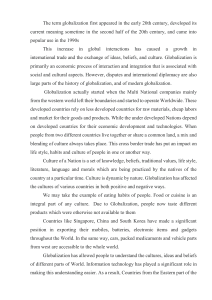
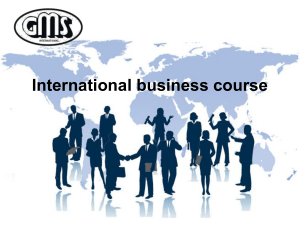

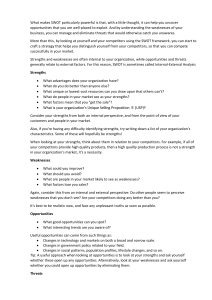
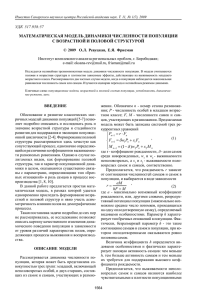
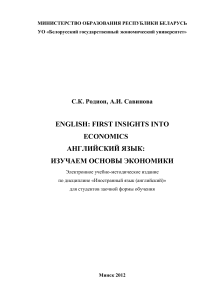
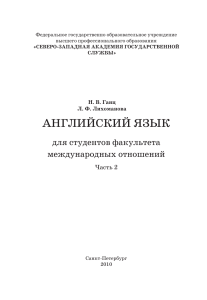
![Гъэтхапэ [Ğetxape]](http://s1.studylib.ru/store/data/004084788_1-232b607c0c5bea7c074e6186249e877c-300x300.png)